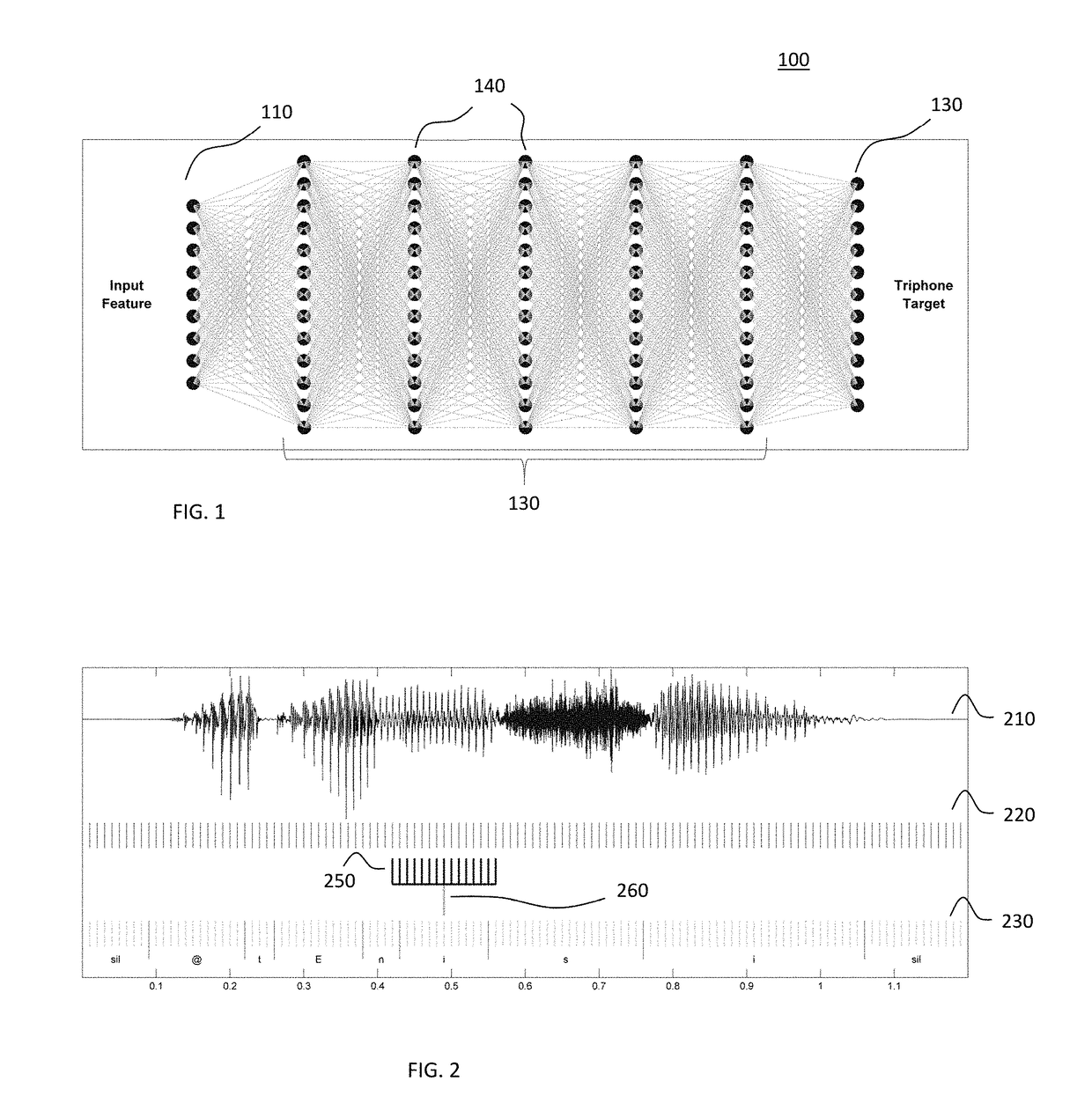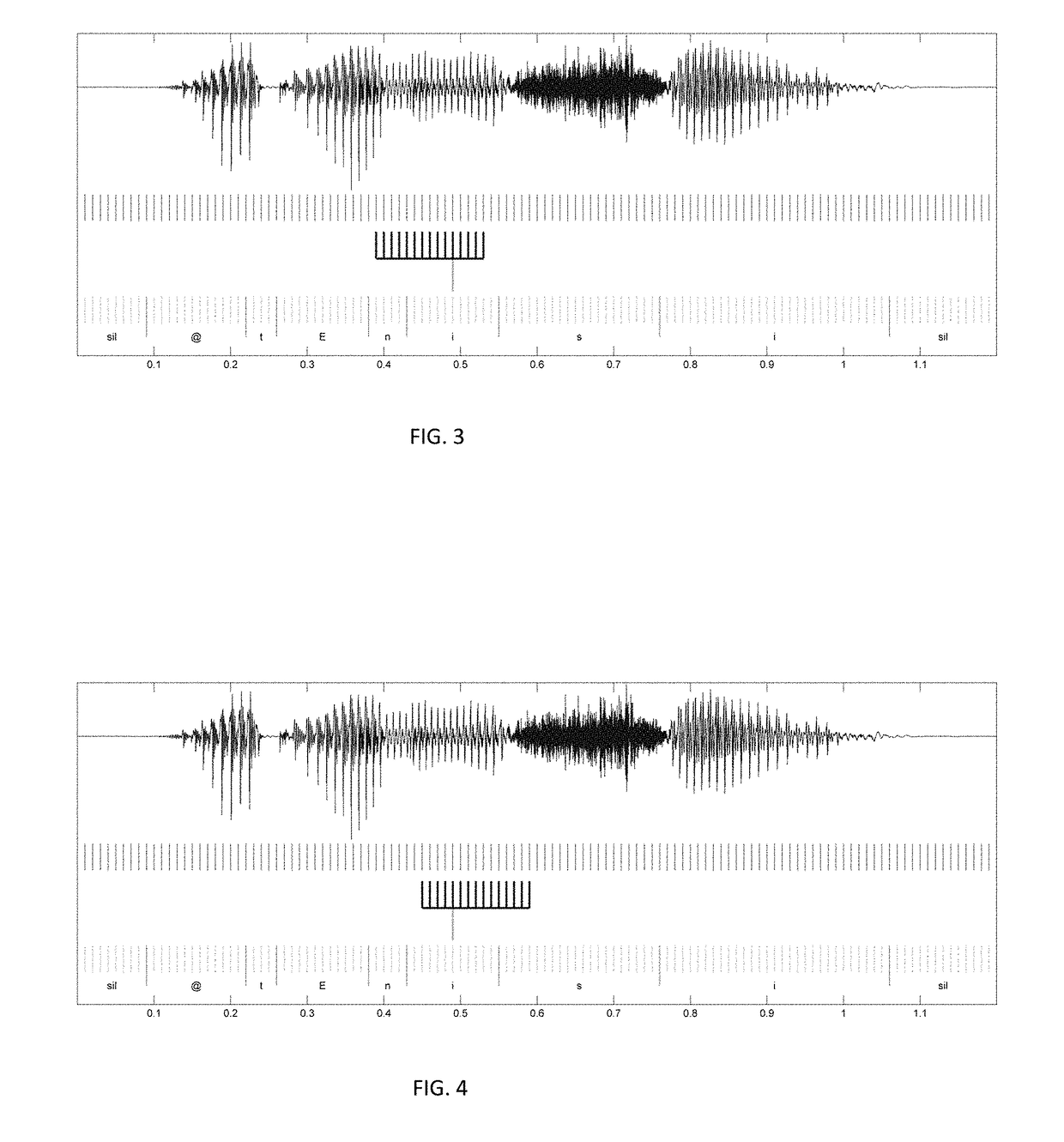Centered, left- and right-shifted deep neural networks and their combinations
a deep neural network and left-right-shifted technology, applied in speech recognition, speech analysis, instruments, etc., can solve the problem of remaining computationally intensive activity, and achieve the effect of increasing accuracy and increasing accuracy
- Summary
- Abstract
- Description
- Claims
- Application Information
AI Technical Summary
Benefits of technology
Problems solved by technology
Method used
Image
Examples
Embodiment Construction
[0023]An approach to training time-shifted deep neural networks (DNN) and combining these time-shifted networks is described herein. The approach is based on an automatic speech recognition (ASR) system using DNN. FIG. 1 depicts an illustrative DNN network structure 100. Referring to FIG. 1, DNN includes an input feature layer 110, the hidden layers 120, and a triphone target output layer 130. Each layer includes a plurality of nodes 140 and between layers, all nodes 140 are connected.
[0024]Initially, a regular ASR model is trained. Then a top layer (e.g., SoftMax layer) and the last hidden layer (e.g., Sigmoid) may be fine-tuned with same data set but with a feature window left- and right-shifted. That is, for a regular DNN training, the feature window takes n frames from the left and n frames from the right. In this approach, one fine-tuning (left-shifted) takes (n+n / 2) frames from left and (n−n / 2) frames from the right, and the other fine-tuning (right-shifted) takes (n−n / 2) fram...
PUM
 Login to View More
Login to View More Abstract
Description
Claims
Application Information
 Login to View More
Login to View More - R&D
- Intellectual Property
- Life Sciences
- Materials
- Tech Scout
- Unparalleled Data Quality
- Higher Quality Content
- 60% Fewer Hallucinations
Browse by: Latest US Patents, China's latest patents, Technical Efficacy Thesaurus, Application Domain, Technology Topic, Popular Technical Reports.
© 2025 PatSnap. All rights reserved.Legal|Privacy policy|Modern Slavery Act Transparency Statement|Sitemap|About US| Contact US: help@patsnap.com



